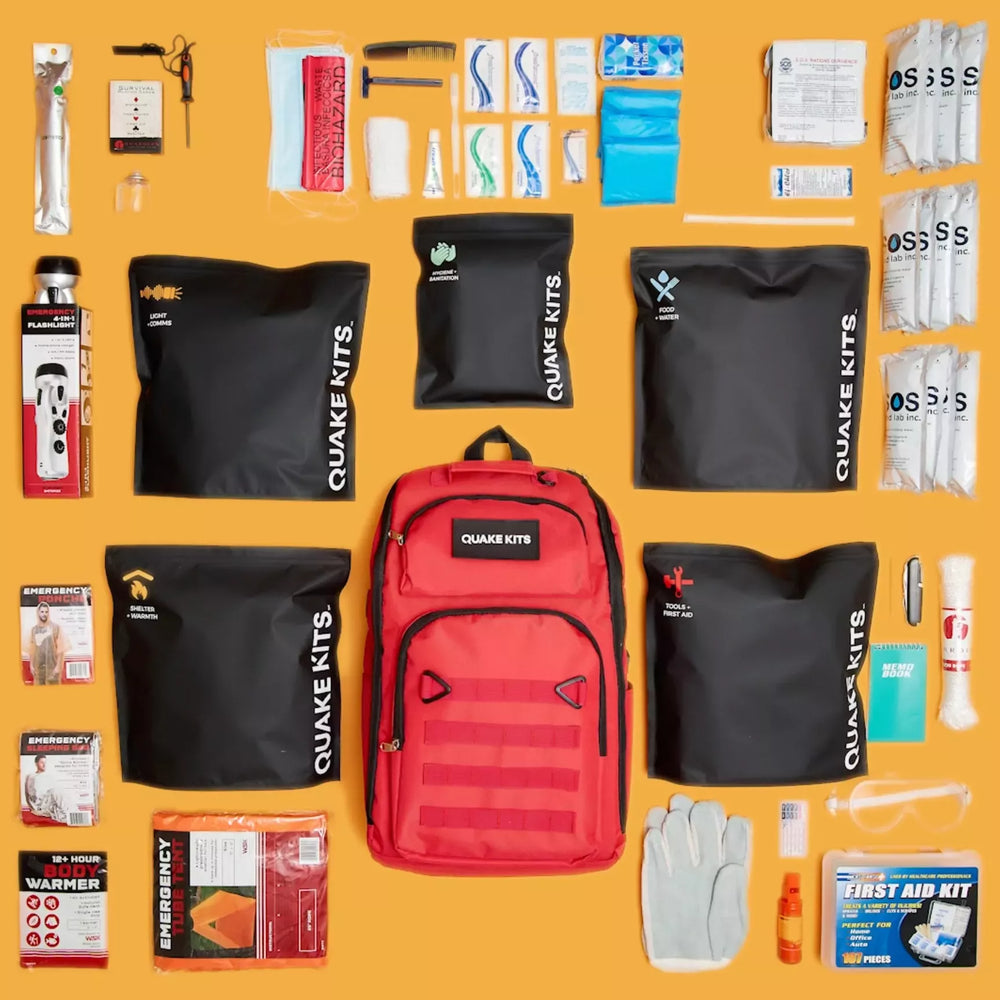DIY Survival Tools and Supplies: Cotton Balls, Vaseline, and Beyond
DIY Survival Tools and Supplies: Cotton Balls, Vaseline, and Beyond
When it comes to emergency preparedness, building your own survival tools from everyday items can be a game-changer. Not only are these DIY survival tools often inexpensive and readily available, but they can also be incredibly effective in a pinch. In this post, we’ll explore some simple yet powerful tools and supplies you can create using common household items like cotton balls, Vaseline, and more.
Essential DIY Survival Supplies
Let’s dive into some of the key items that can be repurposed into survival tools:
- Cotton Balls and Vaseline: These two items can create an effective fire starter that’s easy to make and store.
- Aluminum Foil: Versatile and compact, it can be used for cooking, signaling, or even as an improvised container.
- Duct Tape: This all-purpose tool is perfect for quick repairs, crafting shelter, or even making a bandage in an emergency.
- Plastic Bottles: Empty water bottles can be transformed into containers, filters, or even tools for signaling and communication.
Step 1: Make a Cotton Ball and Vaseline Fire Starter
One of the most useful DIY tools you can create is a fire starter. It’s simple, portable, and works well in various conditions. Here’s how to make one:
- Gather Your Supplies: You’ll need cotton balls and petroleum jelly (Vaseline). If you’re planning to store them long-term, have a small, resealable bag or container ready.
- Prepare the Cotton Balls: Take a cotton ball and thoroughly coat it in Vaseline. Make sure it’s fully saturated but not dripping.
- Storage: Store your coated cotton balls in a resealable plastic bag or an old film canister. Keep them in your survival kit, so you have a reliable fire starter wherever you go.
Pro Tip: To use, simply pull apart the cotton ball to expose the fibers and ignite it with a spark or lighter. The Vaseline will cause the cotton ball to burn longer, giving you ample time to get a fire going.
Step 2: Crafting a DIY Shelter with Duct Tape and Plastic
Duct tape and plastic sheeting can be lifesavers in an emergency where shelter is essential. Here’s how you can create a makeshift shelter:
- Find or Create a Frame: Look for sturdy branches or even use your surroundings, like rocks or fallen trees, to create a shelter frame.
- Lay Out the Plastic Sheeting: Use a plastic drop cloth or large trash bags split open and stretched out over the frame.
- Secure with Duct Tape: Tape down the edges of the plastic sheeting to secure it in place. You can also use duct tape to patch up any holes or gaps, helping to create a more weatherproof space.
Fun Fact: Duct tape is strong enough to create an entire tent structure if you have enough of it! Consider keeping a couple of rolls in your survival kit for versatility.
Step 3: Aluminum Foil for Cooking and Signal Reflectors
Aluminum foil can be invaluable in a survival situation. Here are some of its practical uses:
- Cooking: Use foil to cook food over an open flame by wrapping it around vegetables, meat, or even fish. You can also create a makeshift pan for frying.
- Signaling: The shiny surface of aluminum foil can reflect sunlight and be used as an emergency signal. Just wave it to catch the attention of searchers or passersby.
- Water Container: In a pinch, foil can hold water. Fold it into a bowl shape and use it to collect rainwater or snow for drinking.
Pro Tip: Fold a few sheets of aluminum foil into your survival kit—it’s lightweight, doesn’t take up much space, and has numerous survival applications.
Step 4: Utilizing Plastic Bottles for Water Collection and Filtration
Plastic bottles are often readily available and can serve multiple purposes in survival scenarios:
- Water Filtration: Create a simple water filter by layering sand, charcoal, and gravel inside a plastic bottle. Poke a few small holes in the cap to allow filtered water to trickle out.
- Water Collection: Use a bottle to collect rainwater or melted snow. This is especially useful in areas where water is scarce or contaminated.
- Signal Whistle: In an emergency, you can cut the bottle to create a whistle, which can be used to attract attention.
Quick Tip: When possible, use clear bottles for water collection, as they can also double as a solar still for basic water purification.
Store and Rotate Your DIY Survival Tools
Now that you’ve built these DIY survival tools, it’s crucial to store them properly:
- Label and Date: As with any survival supplies, label each tool with the date you made it. This is especially helpful for perishable items like the cotton ball fire starters.
- Inspect Regularly: Check your supplies periodically to make sure they’re still functional. Replace any items that show signs of wear or have expired.
- Pack Smart: Keep your DIY tools in a dedicated survival kit, so they’re easy to access when you need them. Use resealable bags to keep items like duct tape and foil organized.
TL;DR
Creating your own survival tools from everyday items like cotton balls, Vaseline, duct tape, and plastic bottles can help you be prepared for unexpected situations. These items are easy to find, inexpensive, and incredibly versatile for survival tasks such as fire-starting, shelter-building, cooking, and water collection. By incorporating these DIY tools into your survival kit, you’ll have valuable resources on hand, ready to help you face whatever challenges come your way.
Building a DIY survival kit is more than just a practical exercise—it’s a step toward self-sufficiency and preparedness. With these simple tools, you’ll be equipped to handle emergencies with resourcefulness and resilience.






Leave a comment